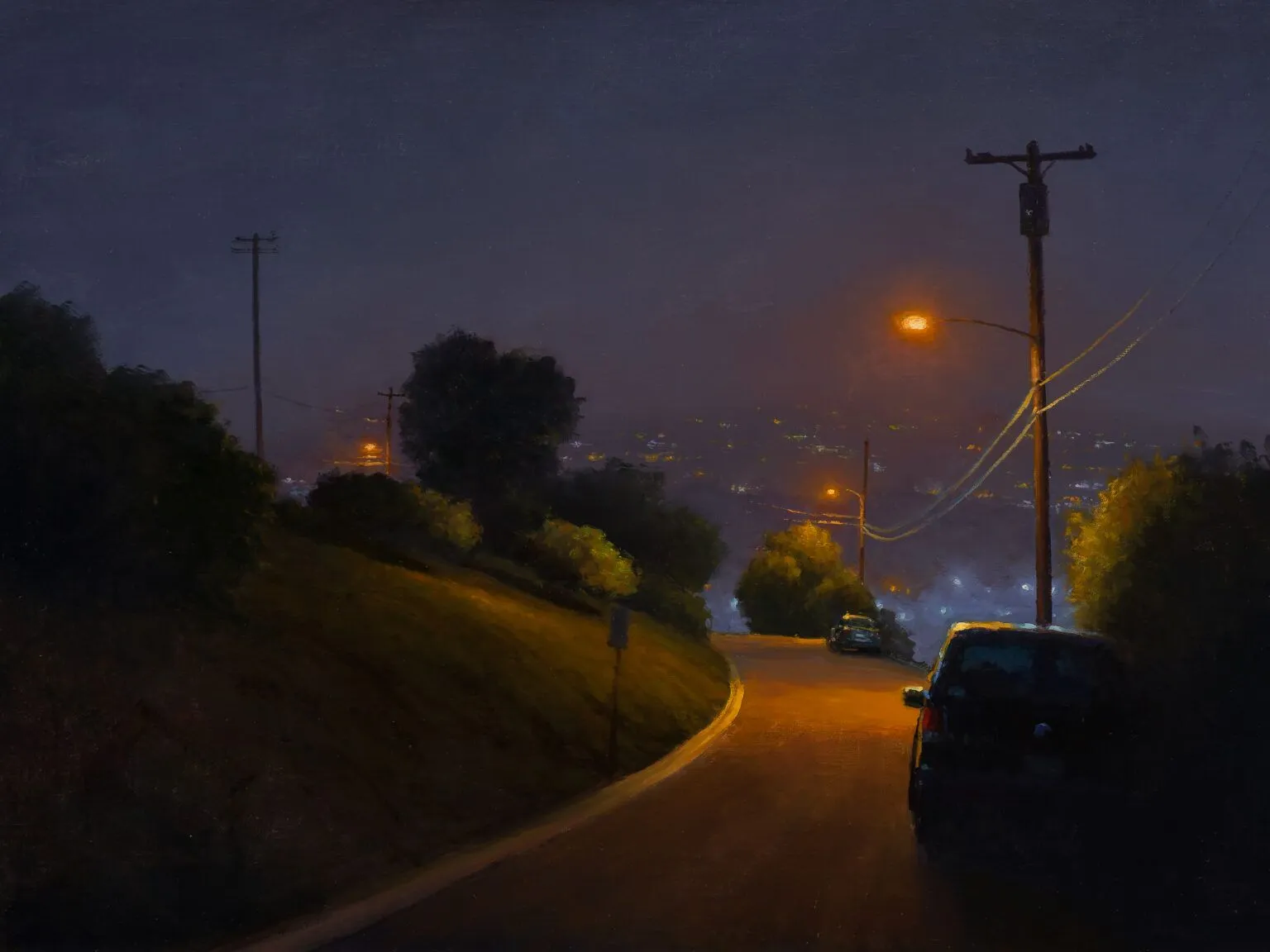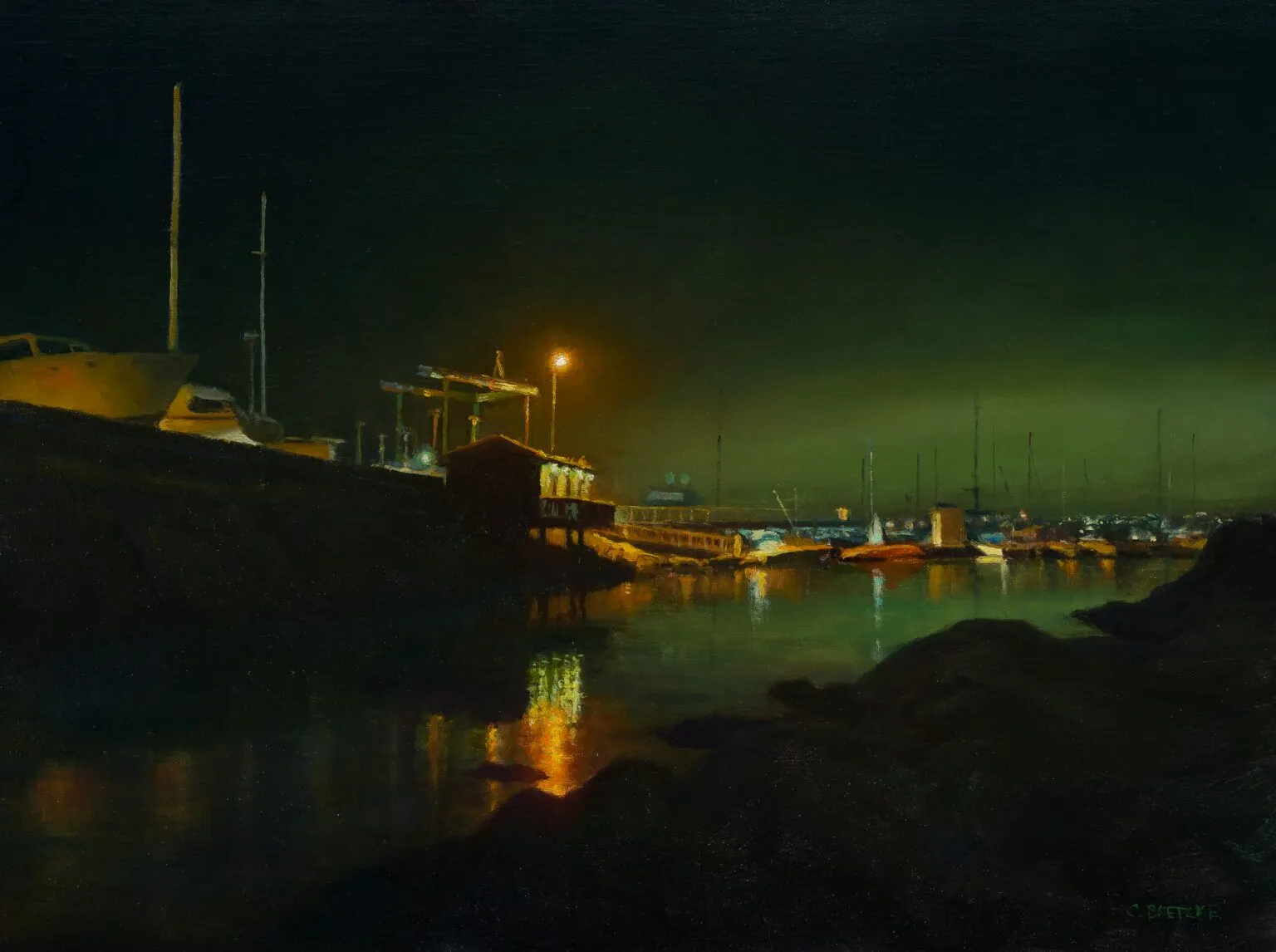( 그림공부 ) 야경을 그리는데 도움이 되는 5가지 조언

Artist Network 에 Carl Bretze 화가가 쓴 야경을 그리는데 도움이 되는
5 가지 팁이라는 글이 있어 옮긴다.
영어 원문의 nocturne 을 야상곡으로 번역이 되어 약간은 어색하여
야경으로 바꿀까 하다가 그냥 놔둔다.
( 번역은 구글 번역, 영어 원문은 맨 뒤에)
==================================================================================
야상곡이란 무엇일까요? 좋은 정의는 다음과 같습니다. 태양이 지평선 아래에 있고
햇빛이 지면을 비추지 않는 장면입니다. 까다로운 부분은 늦은 일몰 장면을
어떻게 분류하느냐입니다. 미술 대회에서 일몰 그림이 야상곡으로 분류되는 것을
자주 보았지만, 저는 어떤 정의든 괜찮습니다.
야상곡을 그릴 때 제가 생각하는 5가지 팁은 다음과 같습니다.
1. 인공조명이 있는 장면을 그리세요. 인공조명은 짧은 거리에서 밝기가 감소하여
명암과 색상의 극적인 효과를 더할 수 있습니다. 또한, 석양과 같은 자연광은 빠르게 변하여
장면의 분위기를 변화시키는 반면, 인공조명은 더 안정적입니다.
2. 빛의 질과 양에 주의를 기울이세요. 모든 것에 영향을 미칩니다.
특히 일몰과 야상곡에서는 색과 빛에 의존하여 그림을 그려야 하기 때문에 더욱 그렇습니다.
야상곡 장면에서는 주변광과 반사광의 다양성이 매우 큽니다.
3. 부분적으로 조명된 부분에 특히 주의를 기울이세요. 프리즘 색상 변화와 명도 변화가
있는 영역을 찾아보세요. 예를 들어, 노란색을 내는 가로등이 바로 아래 지면에 닿습니다.
그 지점에서 바깥쪽으로 이동하면서 빛과 명도는 모두 감소하지만, 색상은 노란색 계열에서
주황색, 주황빛 빨간색으로 조금씩 변합니다.
4. 구름을 사용하여 선형적 관점과 대기적 관점을 모두 표현하고 구도의 균형을 잡으세요.
구름 없는 하늘을 그린 아름다운 그림은 셀 수 없이 많습니다.
고요하면서도 나름대로 극적인 분위기를 연출할 수 있습니다.
5. 혼합할 때 흰색을 너무 많이 사용하지 마세요. 회색빛이 도는 경향이 있습니다.
카드뮴 안료는 야상곡에서 밝게 보일 만큼 충분한 밝기를 가지고 있습니다.
단, 전구와 (초저녁 야상곡을 작업할 경우) 하늘에 아직 빛이 약간 남아 있을 때는 예외입니다.


이 화가의 홈페이지에서 야경 그림 몇점 캡쳐해서....
























What qualifies as a nocturne? A good definition is: a scene in which the sun is below the horizon, and sunlight doesn’t illuminate the ground plane. The tricky part is how to classify a late-sunset scene. I’ve frequently seen sunset paintings classified as nocturnes in art competitions—but any definition is fine by me. Here are my 5 top tips for painting nocturnes:
Paint scenes that feature artificial light. Artificial light drops off over short distances and can heighten the drama of value and color. It’s also more stable, whereas a natural light source—like the setting sun—changes quickly, altering the scene along with it.
Take notice of the quality and amount of light; it affects everything. This is especially true at sunset and with nocturnes in which you’re depending on color and light to carry the painting. The variety of ambient and reflected light is extensive in a nocturne scene.
Pay special attention to partially illuminated areas. Look for areas where you have prismatic color transitions as well as value transitions. For example, a street light emitting a yellow cast hits the ground directly below. As you move from that spot outward, both light and value diminish, but the color also changes slightly from shades of yellow
to orange-yellow to orange-red.
Use clouds to help show both linear and atmospheric perspective to create balance in a composition. That said, there are countless beautiful paintings of cloudless skies. They tend to be serene and can be dramatic in their own way.
Don’t use too much white in your mixtures; it tends to gray color. There’s enough brightness in straight cadmiums to look luminous in a nocturne. The exceptions to this are light bulbs and—if you’re dealing with an early evening nocturne—when there’s still a little light in the sky.